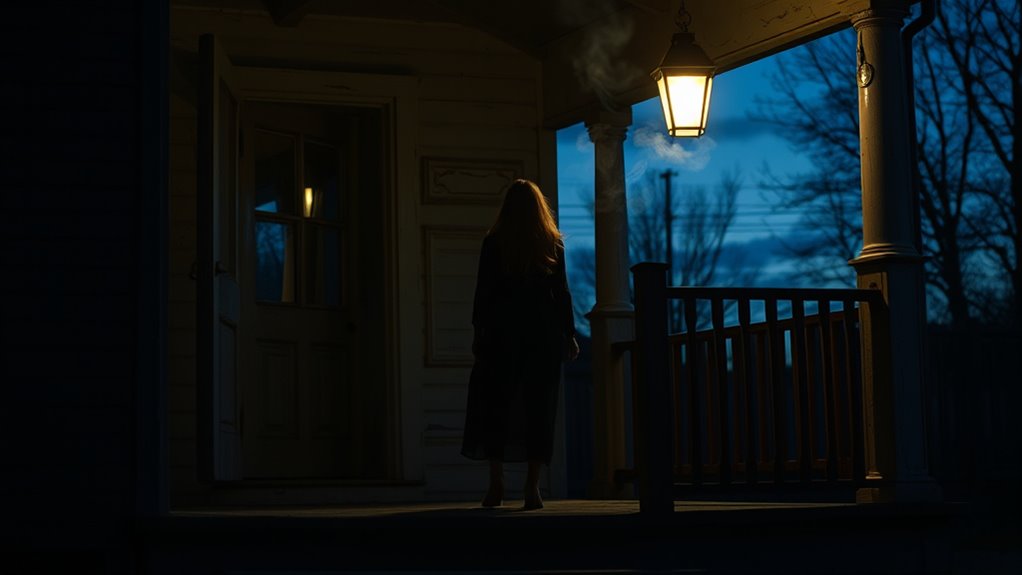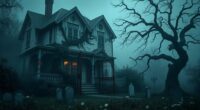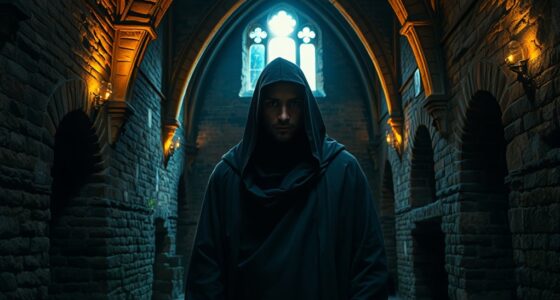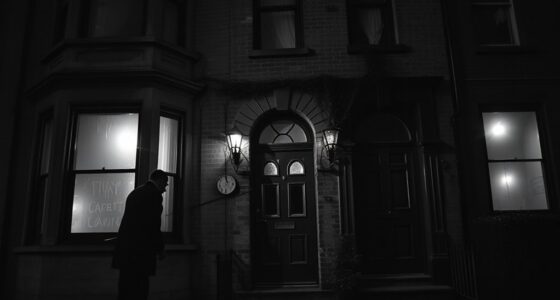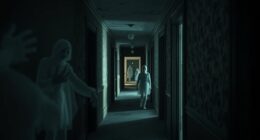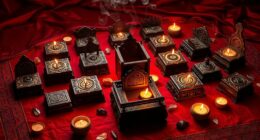When you visit haunted locations, it’s not uncommon to feel like a ghost has tagged along for the ride home. Many report unsettling sounds, sudden chills, or shadows lurking in their space afterward. Cultural beliefs and psychological factors play significant roles in how you perceive these experiences. Media stories may amplify your fears, but there are ways to cope with these feelings. Discovering more about these phenomena can shed light on your own encounters.
Key Takeaways
- Many visitors at haunted locations, like the Whaley House, report feeling followed by ghostly presences after their visit.
- Cultural beliefs can influence perceptions of a ghost following someone home, often interpreting it as a protective or vengeful entity.
- Psychological factors, such as pareidolia and confirmation bias, can amplify feelings of being followed by a spirit.
- Infrasound in haunted locations may induce anxiety, potentially leading individuals to feel a ghost’s presence after leaving.
- Coping strategies, including mindfulness and reflection, can help manage fear and anxiety related to perceived ghostly encounters.
The Haunting Begins: Our Visit to the Haunted Location
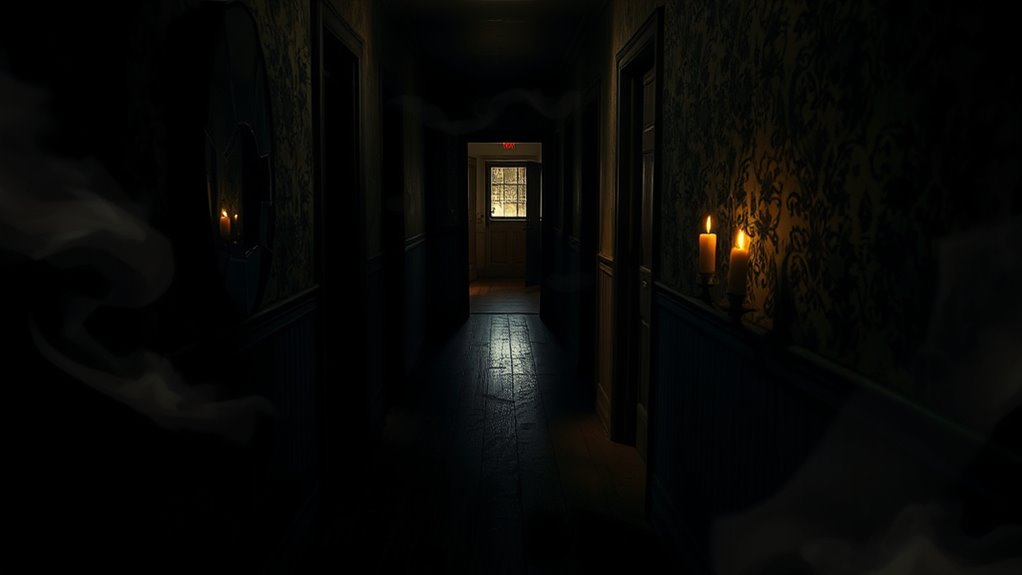
As we approached the eerie façade of the Whaley House, a sense of anticipation filled the air, heightening our curiosity about the ghostly tales that surrounded this historic location.
Known as one of America’s most haunted homes, the Whaley House draws visitors with its rich history and reported paranormal activity. You can’t help but feel the weight of the past, as stories of ghostly apparitions and negative entities linger in the atmosphere.
Guided tours offer insights into the building’s history and legends, inviting you to explore every creak of the floorboards and shadowy corner.
This blend of historical importance and spectral allure makes it a must-visit for thrill-seekers and history buffs alike, greatly boosting local tourism and economy.
Strange Occurrences: Unexplained Sounds and Shadows

The Whaley House’s haunting reputation isn’t just built on its history; it’s also shaped by the strange occurrences that visitors experience. You might hear unexplained sounds like footsteps, sobbing, or even eerie melodies echoing through the halls. Many believe these noises stem from residual energy left behind by tragic events, while skeptics dismiss them.
You’ll likely notice shadows darting in dimly lit corners, often linked to a lurking presence. These shadow figures ignite curiosity and fear alike.
Paranormal investigators use audio recordings and infrared cameras to capture these phenomena, searching for patterns or anomalies. The anticipation of encountering the supernatural can heighten your senses, making you question every creak and whisper in this storied location.
Ghostly Encounters: Personal Experiences and Sightings
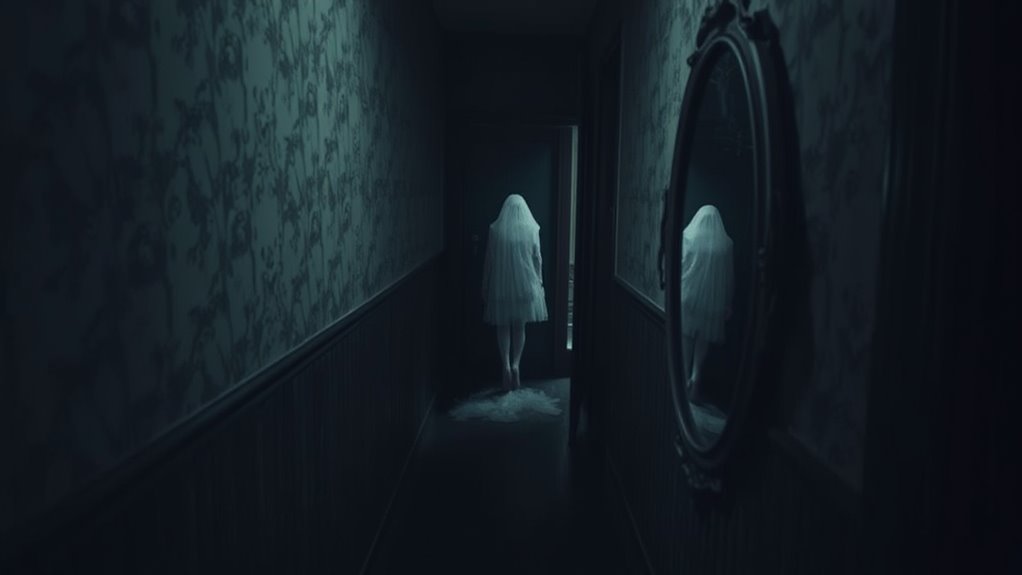
Ghostly encounters often leave people with unforgettable impressions, sparking curiosity and fear alike. You might find yourself in historic sites or old homes, where countless others claim to have seen ghostly figures.
These sightings vary widely, from transparent shapes to fully dressed apparitions, and occur in diverse locations, like Sleepy Hollow Cemetery and the George and Pilgrim Hotel. While many report emotional impacts from their experiences, empirical evidence supporting the existence of ghosts remains elusive.
Some even describe interactive moments, feeling a ghostly touch or hearing whispers, which can shift your belief in the paranormal. Each encounter is unique, intertwining personal feelings with the mysterious, challenging your understanding of reality.
Cultural Beliefs: How Our Background Influenced Perceptions
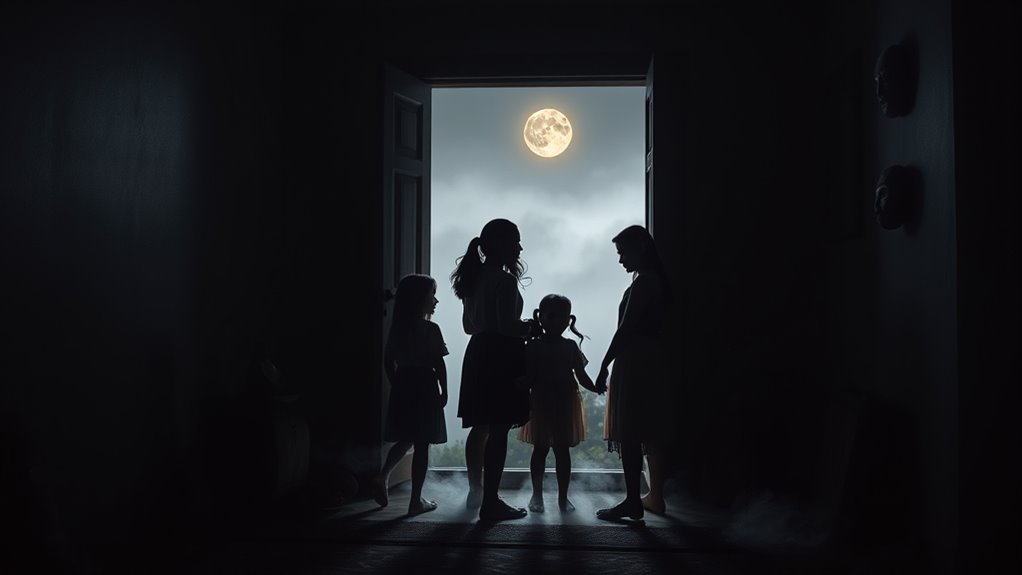
Cultural beliefs shape how you perceive ghosts, influencing everything from your emotional response to encounters to the rituals you might practice.
If you grew up in an Asian culture, you might view spirits like Japanese Yūrei as sorrowful entities seeking peace. In contrast, African traditions often see ancestral spirits as protective guides.
If you’re familiar with European folklore, ghost stories may symbolize revenge or fear, while Latin American customs, like Día de los Muertos, celebrate the return of spirits.
Each background informs your understanding of ghosts, highlighting unique rituals and meanings. This rich tapestry of beliefs not only affects how you interpret your experiences but also shapes the rituals you engage in to honor or appease these spirits.
Psychological Explanations: The Mind’s Role in Ghost Sightings
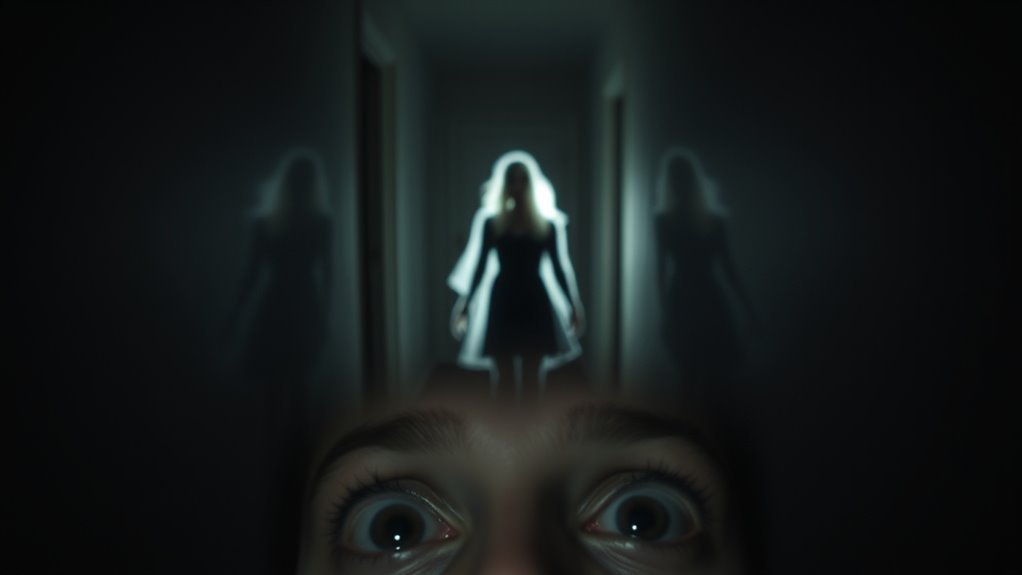
Growing up with different cultural beliefs about ghosts can shape your understanding of the supernatural, but your mind also plays a significant role in how you perceive these entities.
Psychological phenomena like pareidolia can lead you to see faces or patterns in random stimuli, convincing you of ghostly apparitions. Suggestibility and confirmation bias can heighten your belief in the supernatural, especially after hearing ghost stories.
Additionally, conditions like sleep paralysis or hypnagogic hallucinations might cause you to experience terrifying encounters. Stress and mental fatigue can distort your perceptions, making you more vulnerable to ghost sightings.
Your brain’s pattern recognition abilities and altered chemistry can further influence how you interpret eerie situations, reinforcing your belief in ghosts. Furthermore, the impact of natural remedies on mental well-being might play a role in how you process these experiences.
Environmental Factors: The Impact of Infrasound
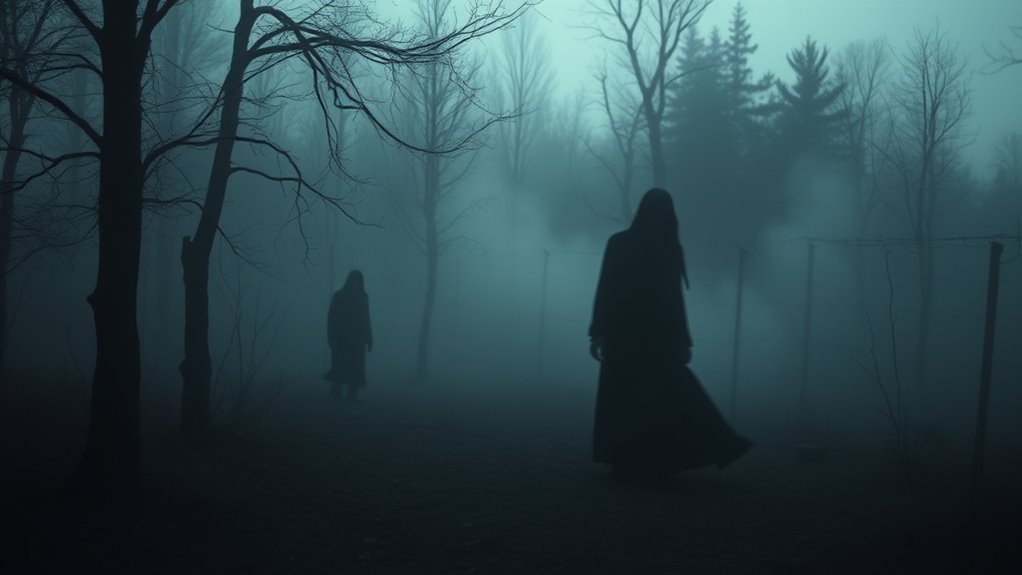
While many dismiss ghost sightings as mere figments of imagination, environmental factors like infrasound can greatly influence our experiences.
Infrasound, typically below 20 Hz, comes from natural sources like earthquakes and thunderstorms, as well as artificial ones such as industrial machinery. Though you can’t hear it, your body might still respond to infrasound vibrations, leading to feelings of anxiety or fear, which could mimic paranormal encounters. Continuous advancements in machine learning algorithms have begun to analyze such environmental factors to better understand their effects on human perception. Studies have shown that haunted locations often register infrasound frequencies, suggesting a link between these low-frequency sounds and reported supernatural phenomena. Additionally, individuals with BPD traits may experience heightened emotional responses to such stimuli, further complicating their perception of reality. Furthermore, data analytics can help identify patterns in how infrasound affects different individuals, enhancing our understanding of these mysterious experiences.
While some argue these effects stem from suggestibility, the ongoing research into infrasound’s impact on human perception raises intriguing questions about the nature of our experiences with the unexplained.
Media Influence: Ghost Stories in Popular Culture
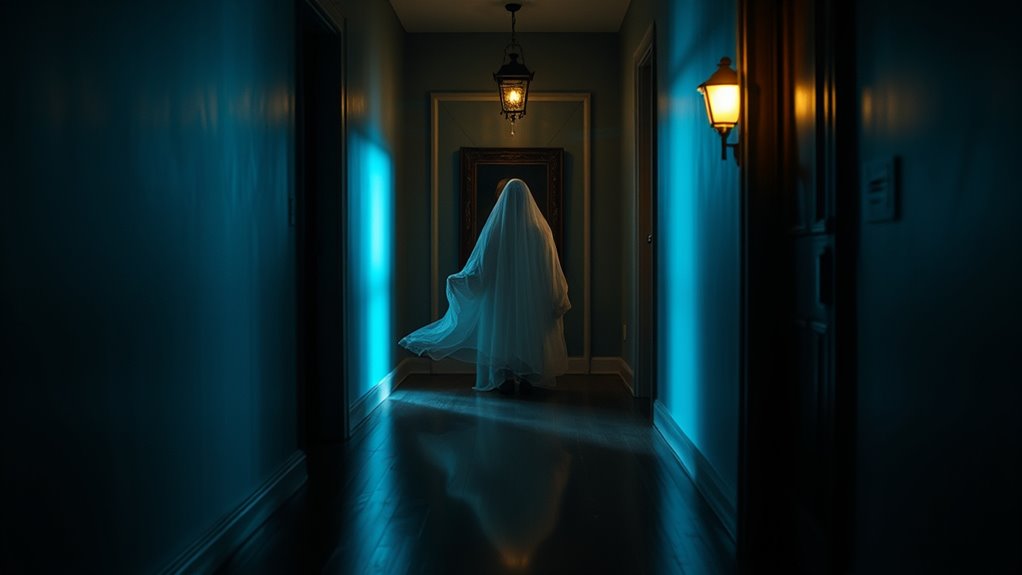
Environmental factors like infrasound may shape our perceptions of the paranormal, but media plays an equally powerful role in shaping our beliefs about ghosts. About half of Americans believe in ghosts, largely influenced by films like “Poltergeist” and “The Exorcist.”
Most people encounter ghost stories through media rather than personal experiences, reinforcing cultural fascination with the supernatural. These classic horror films, often marketed as “true stories,” exploit fear to create emotional connections and lasting impressions.
Social media amplifies this influence, allowing ghost tales to spread rapidly and gain credibility among large audiences. Together, these narratives shape our understanding of ghosts, making them integral to popular culture and contemporary storytelling.
Investigating the Paranormal: Scientific Approaches to Ghosts
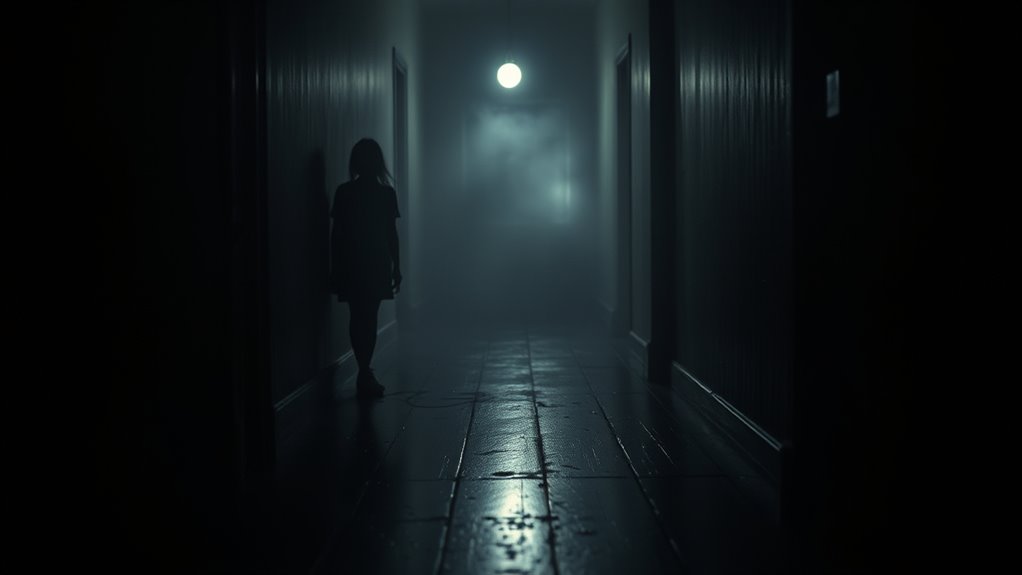
Investigating the paranormal requires a careful blend of historical context and scientific rigor, guaranteeing that claims about ghostly encounters are approached with an open yet critical mind.
You’ll want to begin with a thorough review of the site’s history. Applying the scientific method guarantees objectivity, while controlled experiments help eliminate bias.
Analyze visual and audio evidence critically, as misinterpretation is common. Use structured interviews to gather reliable witness testimonies, and be aware of confirmation bias that can skew your results.
Engaging in double-blind studies enhances credibility, and employing instruments like EMF meters can provide data, though their relevance is debated.
Ultimately, rigorous documentation and interdisciplinary approaches are essential for validating any paranormal claims you encounter.
Coping With Fear: Managing Anxiety After the Experience
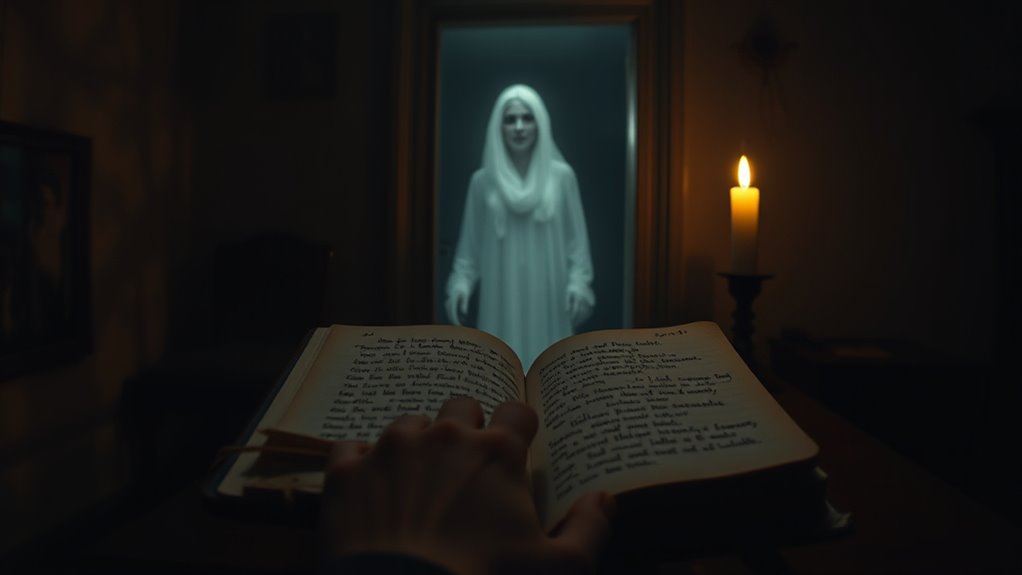
Coping with fear after a haunting experience can feel overwhelming, but understanding effective strategies can help you regain control.
Start by considering Cognitive Behavioral Therapy (CBT) to reframe negative thoughts. Exposure therapy can also be beneficial, gradually helping you face what you fear. While avoidance might offer temporary relief, it often hinders your daily life.
Instead, practice mindfulness and deep breathing exercises for immediate relaxation. Regular exercise can boost your mood and help reduce anxiety long-term.
Don’t underestimate the power of a strong support network—friends and family can provide comfort and understanding.
Finally, developing a consistent sleep schedule and engaging in hobbies can distract you from fearful thoughts, allowing you to move forward with confidence.
Reflections on the Experience: Lessons Learned and Beliefs Challenged
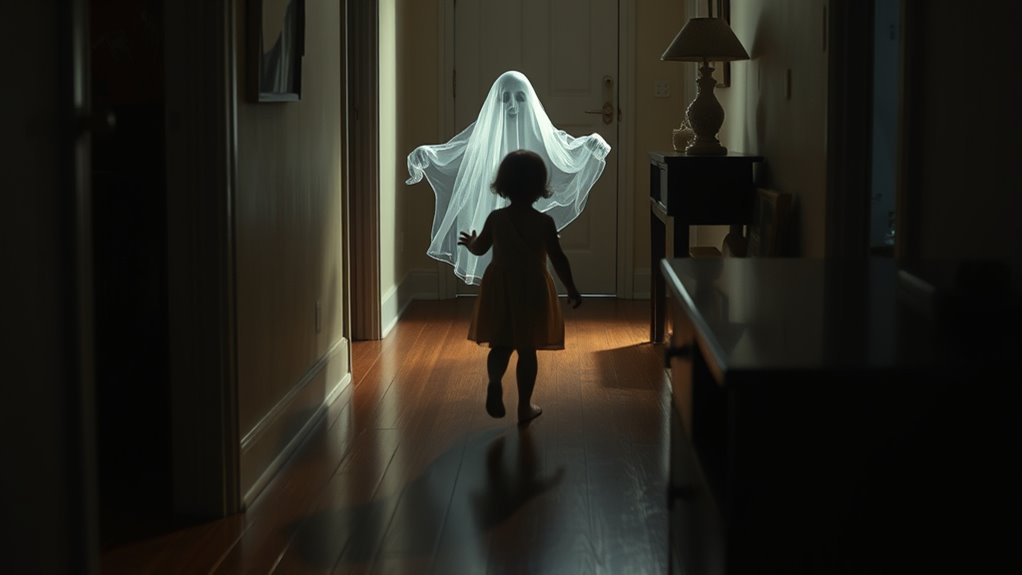
While you may feel overwhelmed by your ghost experience, reflecting on it can lead to valuable insights and personal growth. You might realize that your perception was shaped by suggestion and expectation, revealing how your mind influences experiences.
Ghosts often symbolize unresolved trauma, prompting you to confront emotional distress you’ve been avoiding. This experience could challenge your beliefs, pushing you to contemplate psychological explanations over supernatural ones.
Cultural influences might reshape how you interpret these events, highlighting your desire to connect with the unknown. Ultimately, engaging with these reflections can enhance your understanding of yourself, helping you process emotions and potentially leading to healing.
Embrace this opportunity for transformation and deeper self-awareness.
Frequently Asked Questions
How Can I Tell if My Home Is Haunted?
To tell if your home is haunted, pay attention to unusual sensations like feeling watched or experiencing sudden cold spots.
Notice unexplained noises, such as knocks or whispers, and any electrical anomalies like flickering lights or strange device behavior.
If you sense a persistent presence or see shadows, these could be signs.
Trust your instincts—anxiety or fear in certain areas often indicates something’s amiss.
Keep a journal of these occurrences to spot patterns.
Are There Specific Signs of a Ghost’s Presence?
You might notice specific signs of a ghost’s presence in your home.
Look for unexplained noises, like footsteps or knocking. Doors might open or close on their own, and you could feel sudden temperature drops.
If your pets act strangely or you experience eerie feelings, it’s worth paying attention. You may even see shadows or orbs.
Keep an eye out for disappearing items or unusual smells, as these can also indicate paranormal activity.
What Should I Do if I Encounter a Ghost?
If you encounter a ghost, stay calm and observe your surroundings.
Use tools like EMF meters to document any unusual activity. Introduce yourself respectfully and ask for permission before interacting.
Trust your instincts—if the environment feels off, consider leaving.
After the encounter, document everything and review your findings.
Seek support from friends or experts to process your experience, and always approach the situation with gratitude and respect for what you’ve encountered.
Can Ghosts Harm Me or My Family?
Yes, many believe ghosts can harm you or your family, whether physically or emotionally.
Reports include scratches, bruises, or feelings of anxiety and fear. However, it’s essential to recognize that these experiences often stem from psychological factors or stress rather than actual supernatural encounters.
If you feel threatened, focus on creating a calm environment, seeking logical explanations, and discussing your feelings with loved ones to help manage any distress.
Are Ghost Sightings More Common in Certain Locations?
You might find it fascinating that California, Texas, and Pennsylvania boast the highest number of haunted places in the U.S.
Ghost sightings are indeed more common in certain locations, particularly in haunted urban areas, historic sites, and rural settings like two-story farmhouses.
Factors like architectural style and historical events contribute to this phenomenon, making some places more prone to paranormal activity than others.
Conclusion
As you reflect on your haunting experience, remember that nearly 30% of people believe they’ve encountered a ghost. This statistic highlights how widespread these encounters are and how they can shape our perceptions of reality. Whether you view your experience as supernatural or psychological, it’s a journey that challenges your beliefs and ignites curiosity. Embrace the lessons learned, as they may lead you to a deeper understanding of both yourself and the mysteries that surround us.
